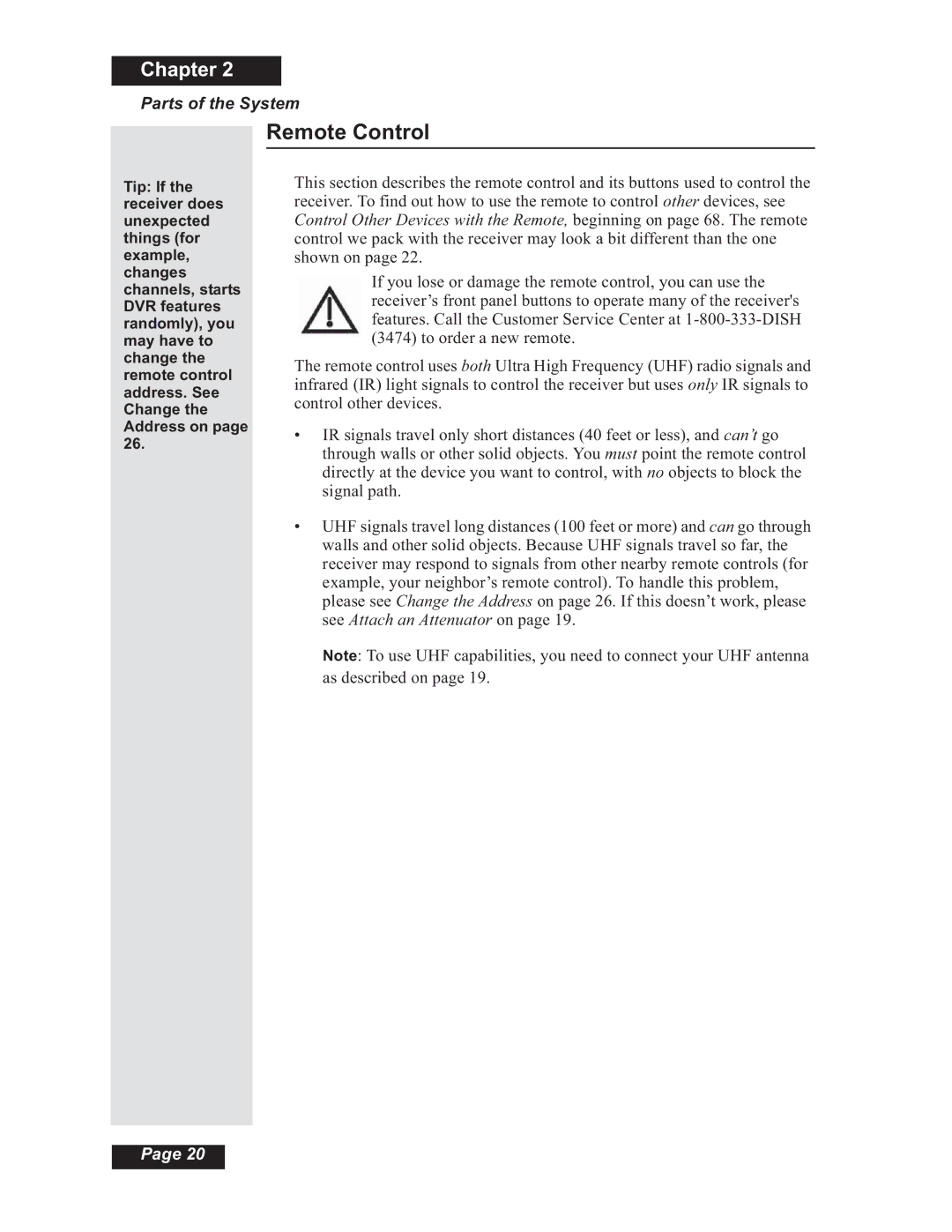
Chapter 2
Parts of the System
Tip: If the receiver does unexpected things (for example, changes channels, starts DVR features randomly), you may have to change the remote control address. See Change the Address on page 26.
Remote Control
This section describes the remote control and its buttons used to control the receiver. To find out how to use the remote to control other devices, see Control Other Devices with the Remote, beginning on page 68. The remote control we pack with the receiver may look a bit different than the one shown on page 22.
If you lose or damage the remote control, you can use the receiver’s front panel buttons to operate many of the receiver's features. Call the Customer Service Center at
The remote control uses both Ultra High Frequency (UHF) radio signals and infrared (IR) light signals to control the receiver but uses only IR signals to control other devices.
•IR signals travel only short distances (40 feet or less), and can’t go through walls or other solid objects. You must point the remote control directly at the device you want to control, with no objects to block the signal path.
•UHF signals travel long distances (100 feet or more) and can go through walls and other solid objects. Because UHF signals travel so far, the receiver may respond to signals from other nearby remote controls (for example, your neighbor’s remote control). To handle this problem, please see Change the Address on page 26. If this doesn’t work, please see Attach an Attenuator on page 19.
Note: To use UHF capabilities, you need to connect your UHF antenna as described on page 19.
Page 20
